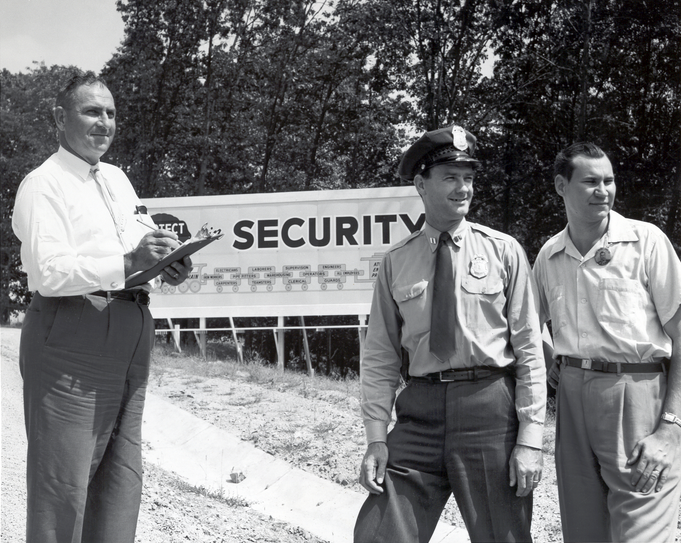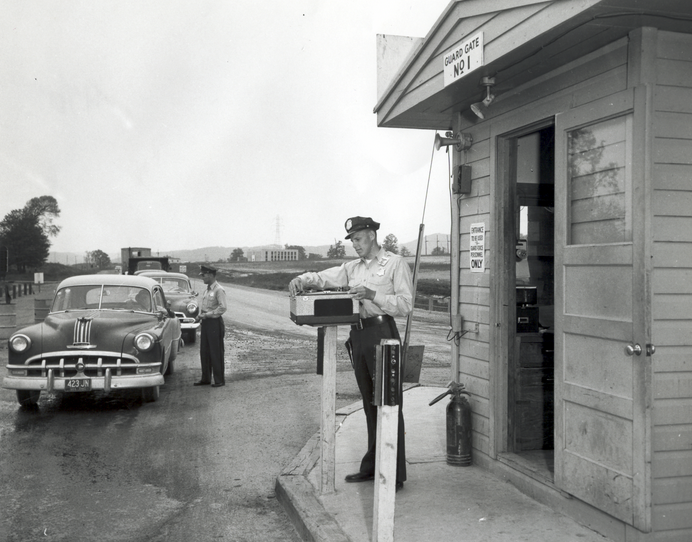
For nearly half a century the A-Plant, as it was known by locals, employed thousands of people in a region infamous for its chronic poverty.
Today, nearly 2,000 people are employed to safely decommission it. The Portsmouth Gaseous Diffusion Plant in Pike County, which for decades produced enriched uranium for America’s nuclear weapons arsenal and power plants, is now a shuttered relic of the Cold War.
The residents of Pike and surrounding counties, many of whom lost good-paying jobs when the plant shut down more than a decade ago, anxiously hope that new employers will arrive to fill the huge void in the region’s economy.
Stephanie Howe is one person working hard to make that happen. Howe, associate director for human capital and operations at Ohio University’s Voinovich School of Leadership & Public Affairs, is leading the PORTSfuture Program, funded by a grant from the U.S. Department of Energy. Howe’s goal is to identify suitable new uses for the site that can guide the government’s cleanup so the real estate can attract new industries.
The first phase of the project was to find out what kind of redevelopment area residents want to see. Howe staffed booths at county fairs and visited farm bureaus and civic organizations as she listened to what the people most affected by the plant’s shutdown had to say.
What she heard was the closure delivered a devastating blow to a region already struggling with high unemployment, and for those fortunate to since find jobs, few offered similar pay and benefits.
“Everybody wants to see something happen out there,” Howe says.
Her job was to listen, but also to make sure the redevelopment ideas were realistic. After rounds of meetings with citizen groups, combined with data analysis and input from national experts, three industries were identified as the most promising: energy, advanced manufacturing, and warehousing and transportation.
Howe is vetting the energy option first to gauge potential interest from industry. She says one idea envisioned by local residents is something along the lines of an energy park, where multiple businesses work on a variety of technologies, such as biofuels, solar and nuclear.
Lots of space, but pollution too
One thing the site offers is plenty of surface area. The old plant, built in the early 1950s, sits on a 3,777-acre parcel near the crossroads of highways 23 and 32. The buildings for the uranium enrichment are so massive they measure in acres. However, some of the existing structures, along with patches of soil and groundwater, are contaminated with radiation, asbestos and industrial solvents. This means tearing down some of the buildings and treating or removing tainted soil and groundwater.
The cleanup effort, funded in part through the sale of leftover stockpiles of uranium, is what currently employs hundreds of area residents. When the market for uranium bottomed out last year, the contractor cleaning up the site warned that without more government funding, it might have to lay off hundreds of workers.
Additional federal funding came through at the last minute, but it is only a temporary fix. The close call prompted a delegation of Ohio’s congressional representatives to push for full federal funding for the cleanup effort, which could take at least another decade, saying the process should not be subject to the vagaries of the uranium market.
In the meantime, Howe said her next step is to determine what the infrastructure needs are for the targeted energy industries. Those findings will be given to the federal government in the hope it can help inform the longterm cleanup plan. For example, if there is something on the site that could be of use and is not contaminated, not removing it will ultimately save time and money.
As for potential new tenants, Howe is hoping that portions of the site can be released for redevelopment as they are cleaned. Her goal is to get at least one big operation on site that will serve as a catalyst to attract others. “It’s kind of like a mall,” she says. “If you can get those anchors in there—the Macy’s, the Nordstrom’s—you can get the other businesses.”
